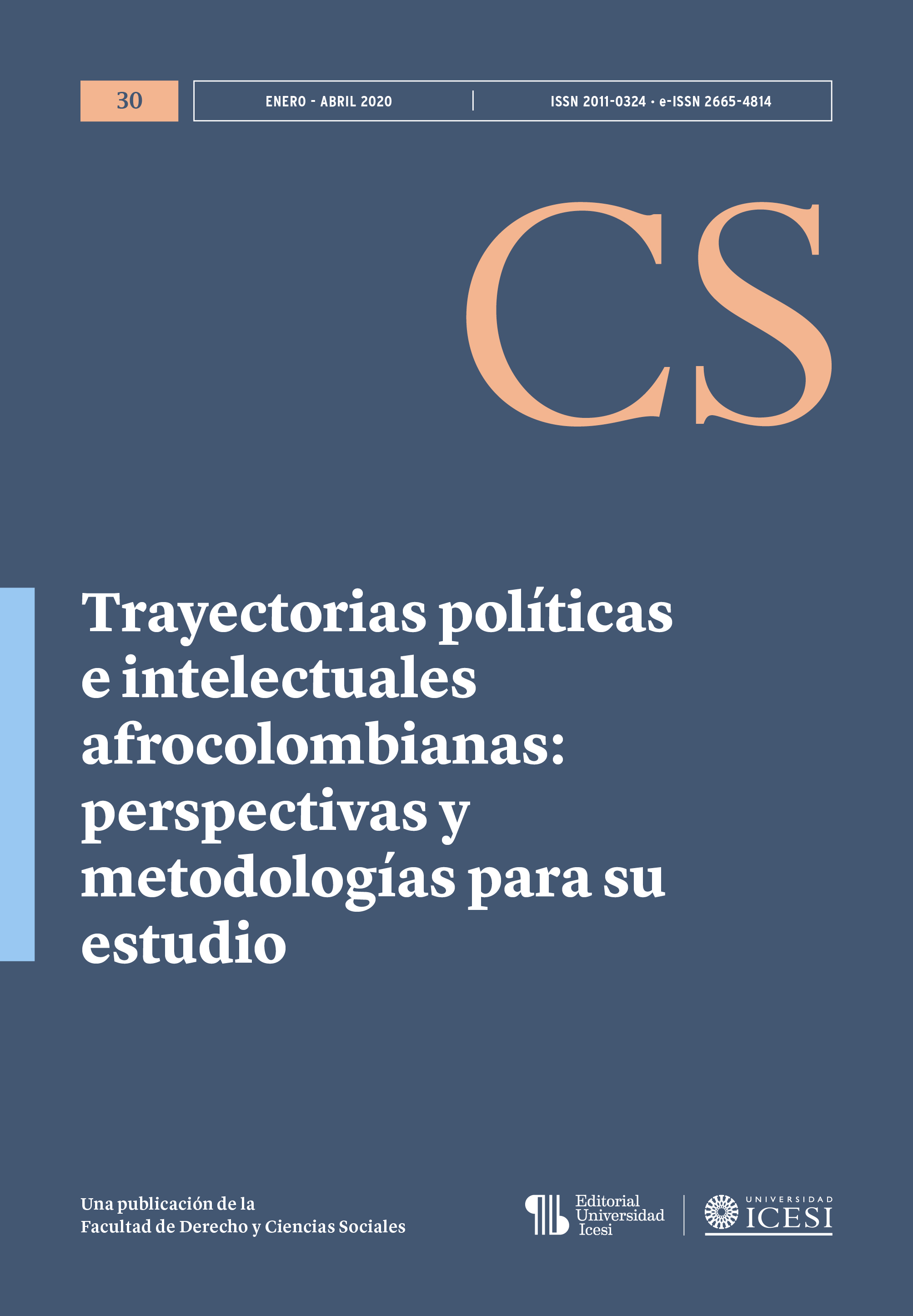African Imprints: Negritude in the Colombian Novel
DOI:
https://doi.org/10.18046/recs.i30.3844Keywords:
Afro-Colombian Novel, Fictional Representation Codes, Literary Canon, Afro- Colombian Narrators, Changó, el gran putas, African DiasporaAbstract
This paper aims to analyze novels that make up an important tradition within the canon of Colombian literature and in which the presence of the children of the African diaspora in Colombia stands out: María (1867) by Jorge Isaacs, La marquesa de Yolombó (1926) by Tomás Carrasquilla, Las estrellas son negras (1949) by Arnoldo Palacios, Changó, el gran putas (1983) by Manuel Zapata Olivella, La ceiba de la memoria (2007) by Roberto Burgos Cantor and La hoguera lame mi piel con cariño de perro (2015) by Adelaida Fernández. With a comparative perspective, the relationships between these novels will be shown to appreciate the genesis of that representation, brought to its maximum poetic expression by Manuel Zapata Olivella in Changó, el gran putas, ambitious historical-mythical fresco of the African diaspora, built from an afro-centered vision, pioneer in Latin America and that anticipated post-colonial theories.
Downloads
References
Bonilla-Naar, Alfonso (1970). La pezuña del diablo. Bogotá: Antares.
Burgos-Cantor, Roberto (2007). La ceiba de la memoria. Bogotá: Planeta.
Caicedo-Ortiz, José Antonio (2013). A mano alzada. Memoria escrita de la diáspora intelectual afrocolombiana. Popayán: Zamaza.
Carrasquilla, Tomás (2008 [1926]). La marquesa de Yolombó. Bogotá: Alfaguara.
Césaire, Aimé (2014 [1939]). Cuaderno de retorno al país natal. Caracas: Monte Ávila.
Collazos, Edgar (2008). El demonio en la proa. Medellín: Hombre Nuevo.
Collazos, Edgar (2017). En tierra extraña. Cali: Universidad del Valle.
Espinosa, Germán (1970). Los cortejos del diablo. Montevideo: Alfa.
Fernández, Adelaida (2015). La hoguera lame mis pies con cariño de perro. La Habana: Premio Casa de las Américas.
Freyre, Gilberto (1983). Casa-grande & senzala. Río de Janeiro: José Olympio.
Glissant, Édouard (2005a). El discurso antillano. Caracas: Monte Ávila.
Glissant, Édouard (2005b). Introdução a uma poética da diversidade. Juiz de Fora: Universidade Federal de Juiz de Fora.
Henao-Restrepo, Darío (2005). El mundo de Nay y Ester. Poligramas, 23, 9-28. Recuperado de http://bibliotecadigital.univalle.edu.co/bitstream/10893/2913/1/Rev.Poligramas%2c-No.23%2cp.9-28.pdf
Isaacs, Jorge (2005 [1867]). María. Edición crítica de María Teresa Cristina. Obra Completa, vol. 1. Bogotá: Universidad Externado de Colombia/Universidad del Valle.
Martínez de Varela, Teresa (1981). Mi Cristo negro. Quibdó: Asamblea Departamental.
Matory, J. Lorand (2015). Religiones del Atlántico negro. Santiago de Cuba: Casa del Caribe/Oriente.
Maya, Luz Adriana (1998). Demografía histórica de la trata por Cartagena 1533-1810. Bogotá: Instituto Colombiano de Cultura Hispánica.
Palacios, Arnoldo (1998 [1949]). Las estrellas son negras. Bogotá: Ministerio de Cultura.
Patiño, Germán (2007). Fogón de negros. Bogotá: Convenio Andrés Bello.
Velásquez, Rogerio (1997 [1953]). Memorias del odio. Bogotá: Biblioteca del Darién.
Yacup, Sofonías (1990). Litoral recóndito. Popayán: Imprenta del Cauca.
Zapata-Olivella, Manuel (1966). María: testimonio vigente del romanticismo americano. Letras Nacionales, 14, 15-44.
Zapata-Olivella, Manuel (1983). Changó, el gran putas. Bogotá: Oveja Negra.
Zapata-Olivella, Manuel (2010). Changó, el gran putas. Bogotá: Ministerio de Cultura.
Downloads
Published
Issue
Section
License
Copyright (c) 2020 Darío Henao-Restrepo

This work is licensed under a Creative Commons Attribution-NonCommercial 4.0 International License.
© Reserved Copyright
Material in this publication may be reproduced without authorization, provided the title, author and institutional source is acknowledged.
The content published in Revista CS is distributed under the Creative Commons BY-NC 4.0 Attribution/Recognition-NonCommercial 4.0 International license.
You are free to:
Share — copy and redistribute the material in any medium or format.
Adapt — remix, transform, and build upon the material.
Under the following terms:
Attribution — You must give appropriate credit , provide a link to the license, and indicate if changes were made . You may do so in any reasonable manner, but not in any way that suggests the licensor endorses you or your use.
NonCommercial — You may not use the material for commercial purposes.












